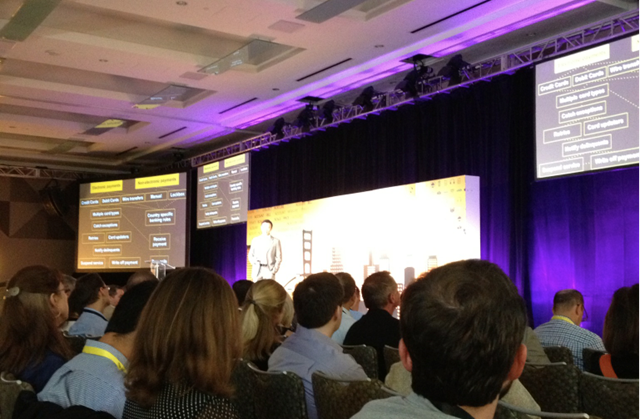Here at LiquidPlanner, we love our nonprofit customers. But how do nonprofits feel about us? To find out, we sat down with Kate Witt, Senior Project Manager at NPower Seattle. As a nation-wide nonprofit, NPower’s goal is to bring information technology services to fellow nonprofits and technology training to young adults. How does Kate and her Database and Web Consulting team use LiquidPlanner? Find out as we chat about how nonprofits can benefit from online project management tools.
LiquidPlanner: What kind of online project management tools were you using before LiquidPlanner?
Kate Witt: We used a combination of tools, both hi-tech and low-tech, including a whiteboard that sits in one of the developer’s cubes. We are also users of Basecamp. We find it to be an excellent tool for managing communication between the clients and ourselves. However, when we were just using Basecamp, it was difficult to see the overview of all of our projects, such as how much work was left to do and when we’d be free to start another database project. This was incredibly difficult.
LiquidPlanner: So you didn’t have a clear picture of how much time everything would take?
Kate: We would have no way of telling a client, “We will be available to work with you in August.” We’d have to ask developers questions like, “What’s your availability feeling like?” This is clearly not all that useful. Feelings aren’t often reality. This was also rough for our developers because I felt (and this is my personal opinion), that they would say, “Oh, I can probably complete this by the end of June” instead of saying “Let’s put all our tasks in LiquidPlanner and let the algorithm figure it out.” LiquidPlanner can now let us know that we won’t finish until the second week of July. I can clearly explain this to a client, and it neutralizes the conversation.
LiquidPlanner: So you’re scheduling in LiquidPlanner and collaborating in Basecamp. Do you find that you have a greater ability to deliver projects and manage clients now that you have a scheduling tool in addition to a collaboration tool?
Kate: Rather than going with the general idea of “We’ll be free for you in August,” I’m able to have a much clearer understanding of when we’ll be available to start a new project. The psychological advantage my team has is that they know how much time they have for a project and also what happens when something else turns into a higher priority. I’ve noticed that people in the nonprofit realm tend to feel guilty about missing deadlines. They think, “If I only was more ‘something’ I could help more people.” Again, LiquidPlanner is pretty huge here — it shows the real amount of work there is to complete, and there are only so many hours in the day.
LiquidPlanner: When you’re talking to clients, does having this insight make you feel more confident? Does it make you look more professional?
Kate: I was working on a website for a member-based network that wanted to start collaborating and sharing information but were also in the middle of developing a program: building a new website, designing a new logo, etc. There were a lot of balls in the air. We had holidays coming up, so without LiquidPlanner, it would have been hard to figure out what missing some of those dates would do. But I was able to say, “If you get your logo finalized by this date, we will make this launch date. If you don’t figure it out until two weeks later, this is how it will affect us.” This would have been impossible to do in Basecamp.
The client’s expectations are important. You lose energy around a project if you’re spending a lot of time trying to fix things as opposed to being able to set clear expectations at the beginning.
LiquidPlanner: So would you say it neutralizes the conversation with the client?
Kate: It completely does if I can say, “This is what will happen.” And then once I say that, we can work together to do any number of things to problem solve.
The other thing that’s interesting for my developers is the very simple process of coming in on a Monday morning with multiple clients and projects, opening up LiquidPlanner, looking at what’s on the calendar for today and saying, “Great. OK.” They’ve been gone all weekend and then they come back and it helps restart their brains. I’ve been told how helpful LiquidPlanner is in that way on multiple occasions. When you have multiple clients, that’s invaluable.
LiquidPlanner: What tips would you give to a nonprofit who was interested in using online project management software?
Kate: You have to figure out what you want to track and what problems you’re trying to solve with the tool (which is easy to forget when you’re going out and looking at shiny tools all day). Be clear about the problem you’re trying to solve and be clear on what your process currently is, even if it’s painful. Sometimes you have to look in the mirror. Discuss what an ideal process would look like. You can get pretty darn close to that and at least you’ll have a goal about where you’re trying to get to, but you have to know where you are first.
LiquidPlanner: Why should nonprofits work with NPower?
Kate: They need to know that they’re not the only ones who are struggling. If they’re struggling with technology issues, we have spoken with other nonprofits who are struggling with the same problems. NPower has been around for a decade and we’re here to offer our expertise. We’re not the type of place you come to and say “Just build this!” Talk to us about your problems and we’ll figure out the solution together.







